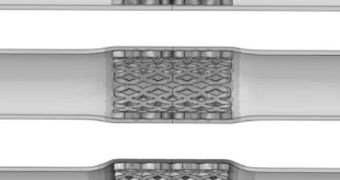A group of investigators in the United States managed to develop a mathematical model that for the first time explains the behavior of shape-memory polymers. These materials are not new, but the way they function has never been modeled before.
In charge of the investigation were researches at the Massachusetts Institute of Technology (MIT), who were able to develop the mathematical model after conducting careful analyses of these materials.
With the new models available, other researchers could develop ways of using the materials for a large variety of interesting practical applications, such as for example constructing artificial biomedical devices, and maybe even space structures.
The space capsule could be launched in a compact package, and then unfurled once they reach the edge of space. Shape-memory plastics can revert to a predefined form when certain criteria are met.
For example, if its trait depends on temperature, then once a compact mixture of the stuff is heated over the threshold level, the material retakes its previous shape.
The plastics can be squished, twisted or bent, but will always return to their original shape. The materials are derived from metal shape-memory metal alloys, which were the first materials to exhibit such properties.
But the polymer-based variety has a host of advantages of the metal-alloy one, explains the MIT Warren and Towneley Rohsenow professor of mechanical engineering, Lallit Anand.
“This is no doubt the most comprehensive analysis published on the behavior of shape memory polymers [It]will provide a means to assess proposed applications of the materials, and also motivate new applications,” adds Ken Gall.
The expert holds an appointment as a professor of materials science at the Georgia Institute of Technology (Georgia Tech). He was not a part of the new investigation.
In the experiments the MIT team conducted the researchers focused their efforts on seeing whether the polymer-based shape-memory materials could be used to develop medical stents.
There are devices that can be inserted in the blood vessels of patients, helping arteries remain opened and unclogged regardless of cholesterol levels.
The new investigation was only made possible through funds obtained from the US National Science Foundation (NSF), and the MIT-Singapore Alliance.

 14 DAY TRIAL //
14 DAY TRIAL //